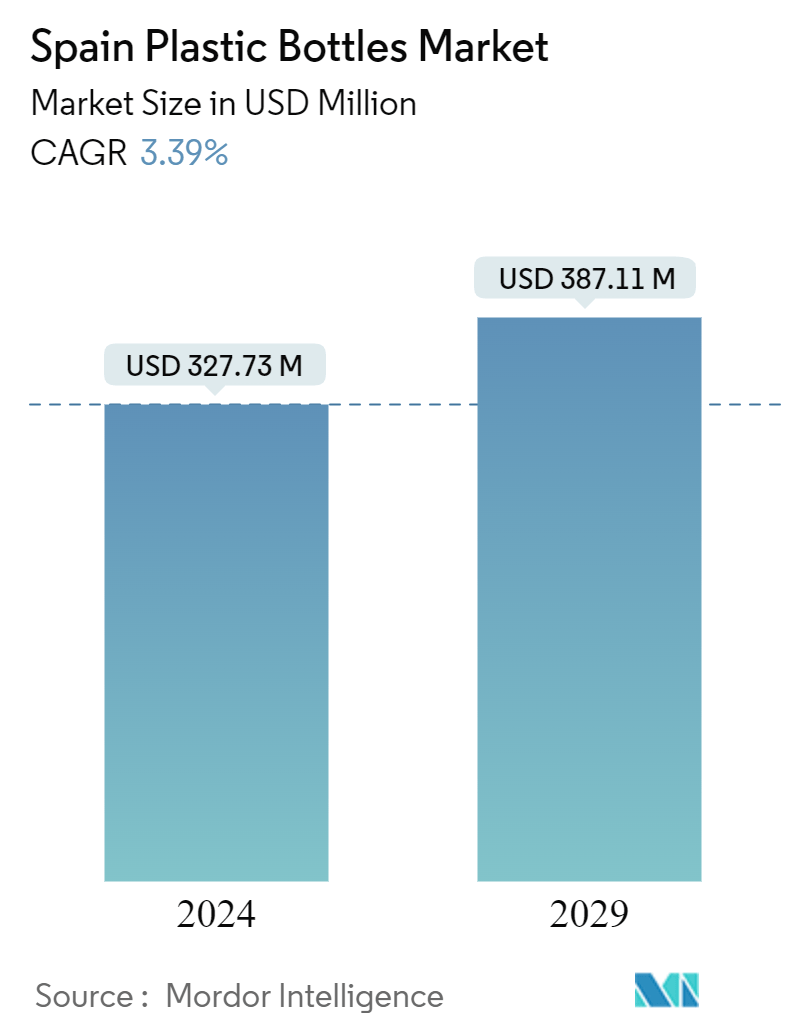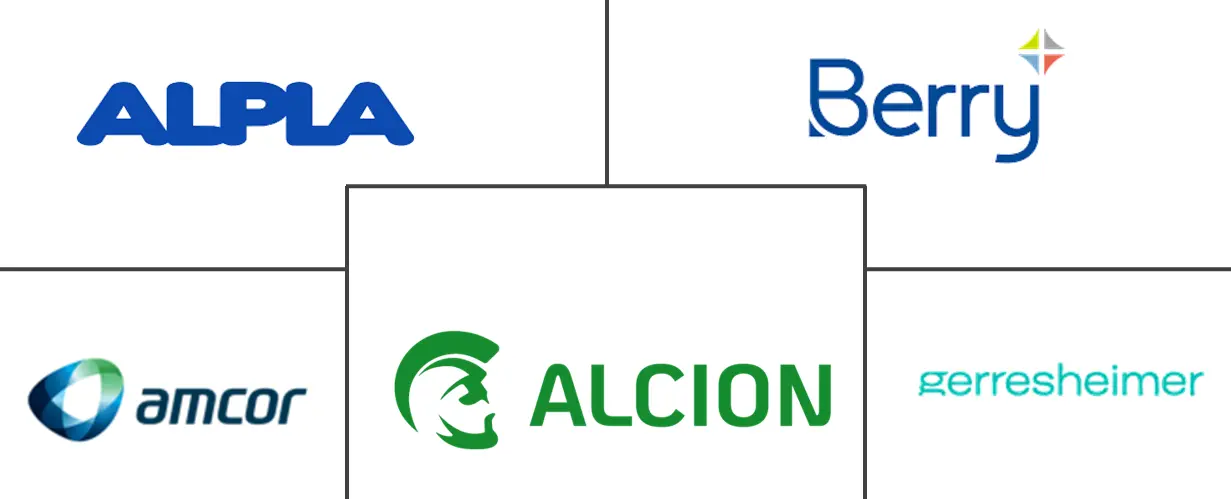Market Size of Spain Plastic Bottles Industry

| Study Period | 2019 - 2029 |
| Base Year For Estimation | 2023 |
| Market Size (2024) | USD 327.73 Million |
| Market Size (2029) | USD 387.11 Million |
| CAGR (2024 - 2029) | 3.39 % |
| Market Concentration | Medium |
Major Players
*Disclaimer: Major Players sorted in no particular order |
Spain Plastic Bottles Market Analysis
The Spain Plastic Bottles Market size is estimated at USD 327.73 million in 2024, and is expected to reach USD 387.11 million by 2029, growing at a CAGR of 3.39% during the forecast period (2024-2029). In terms of production volume, the market is expected to grow from 353.22 thousand tonnes in 2024 to 413.10 thousand tonnes by 2029, at a CAGR of 3.18% during the forecast period (2024-2029).
- The Spanish plastic bottles market showcases a wide array of materials and applications, mirroring the country's vibrant consumer landscape. Polypropylene (PP) and polyethylene terephthalate (PET) dominate the production of plastic bottles. PET stands out for its lightweight, transparent, and recyclable properties, making it the go-to choice for packaging beverages, including carbonated and non-carbonated soft drinks, energy drinks, and fruit juices. Beyond beverages, PET's versatility and durability have made it a staple in the food sector, packaging condiments like mayonnaise and ketchup and other food items requiring airtight and tamper-proof solutions.
- In Spain, a rising demand for beverages in smaller packaging formats is driven by evolving consumer preferences and lifestyle trends. The shift toward convenience and on-the-go consumption has amplified the appeal of mini-sized bottles, especially for water, soft drinks, and energy drinks, catering to those prioritizing portability and portion control. Furthermore, the personal care and household products sectors are also bolstering the growth of the plastic bottles market as they increasingly seek sustainable packaging solutions.
- Spain's thriving tourism industry, with the country being a favored travel destination, further amplifies this demand. Tourists often gravitate towards small, easily disposable bottles for convenience. According to an article from Invest in Spain in February 2024, Spain achieved record tourism figures in 2023, as reported by the Spanish Statistics Institute (Instituto Nacional de Estadística, INE), welcoming a total of 85.1 million international travelers throughout the year.
- Material innovations are reshaping the market landscape. There is an intensified focus on bio-based plastics and other sustainable materials aimed at minimizing the environmental impact of plastic bottles. Companies are delving into alternatives like polylactic acid (PLA) and polyhydroxyalkanoates (PHA), which are sourced from renewables and boast biodegradability. These materials resonate with the circular economy model, championing resource efficiency and waste reduction.
- Numerous industry players are embracing sustainable strategies, fostering a mutually beneficial scenario across the country's value chain. For example, in July 2023, gr3n unveiled plans for a pioneering manufacturing plant in Spain specializing in microwave-assisted depolymerization of PET in collaboration with Intecsa Industrial. The polymers produced can be transformed into new bottles, trays, or garments, effectively replacing fossil fuel-derived feedstock. This innovation positions gr3n to potentially achieve bottle-to-textile, textile-to-textile, or even textile-to-bottle recycling, marking a significant shift from a linear to a circular system.

